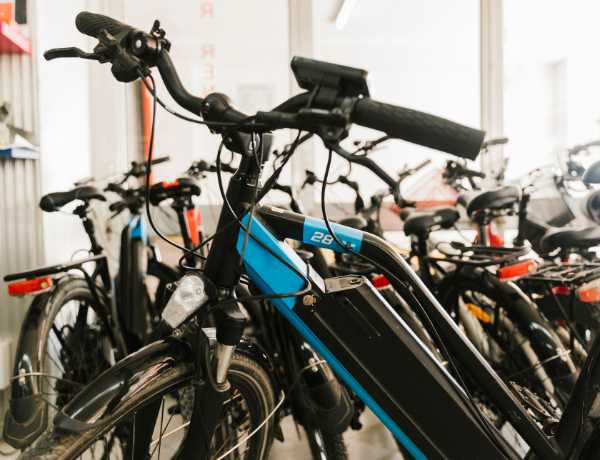Free Consultation - Call Now:
Free Consultation - Call Now:

Electric bikes are rapidly growing in popularity across the globe. But are e-bikes safe? Powered by a rechargeable battery, the e-bike is:
With electric bicycles becoming more popular and accessible, there is some debate over how safe they are for riders and other road users. This article looks at the risks and safety issues associated with riding an e-bike and equips readers with insight into the potential dangers of e-bikes. If you find yourself injured from an e-bike- don't hesitate to contact our personal injury lawyers for a FREE consultation.

Electric bicycles, or "e-bikes" as they're often called, are powered by an electric battery. The motor assists e-bike riders on their journeys, making them easier to pedal. E-bikes have the same rules as traditional bicycles but offer the bonus of additional power. There are two classes of e-bikes:
"Are e-bikes safe?" is a critical question with the rising trend of electric bikes. In the US, regulations and laws on the safety of bikes vary from one state to another. Some states have adopted similar laws to traditional bicycles, while others have unique rules for e-bikes. In general, e-bikes are classified as:
Class 1 e-bikes have an electric motor that assists when pedaling up to speeds of 20 mph. They have pedals and can be operated like traditional bicycles. They are mostly treated as regular bicycles and do not require a license, registration, insurance, or helmets.
Class 2 e-bikes have a throttle that enables the bike to move without pedaling. These e-bikes are also limited to a speed of 20 mph and are treated like regular bicycles in most states.
Class 3 e-bikes have an electric motor that assists when pedaling up to speeds of 28 mph. They are primarily motorized vehicles, requiring registration, insurance, helmets, and a driver's license.
Apart from class distinctions, e-bike laws also differ based on the location and purpose of the ride. For example, some states allow e-bikes on bike paths and trails, while others prohibit them. Some states require e-bike riders to wear helmets, regardless of the class of the e-bike, while others do not. Check the laws and regulations of your state or locality before riding an e-bike.
Emergency rooms nationwide are seeing increased electric bike injuries, especially in children. Commonly reported injuries include:
Most of these injuries result from:
E-bikes make it possible for people who may not have been able to bike before because of physical limitations to ride. The electric motor helps them overcome obstacles while still getting a good workout. Riding an e-bike has also been shown to reduce stress levels and improve mental well-being.
E-bikes emit fewer greenhouse gases than traditional cars, reducing their carbon footprint. E-bikes are also quiet, which makes them much less disruptive.
The cost of a good quality e-bike is comparable to traditional bicycles. E-bikes also require less maintenance than cars.
E-bikes make it possible to tackle longer distances without arriving at work or home sweaty and exhausted. You thus save money on gas or public transportation and arrive at your destination refreshed.
E-bikes are more straightforward to ride than traditional bikes. Consider using them if you prefer a more relaxed and comfortable ride.
E-bikes can travel up to 28 miles per hour, depending on the model and the terrain. That might mean e-bike injuries for riders or even pedestrians. For example, it can result in safety hazards when passing slower riders or pedestrians.
E-bikes can weigh up to 100 pounds. That makes them difficult to maneuver, especially around tight turns or obstacles in the road.
Many car drivers are not accustomed to sharing the road with e-bikes, which can lead to severe injuries. Riders must be cautious and defensive and always assume that cars cannot see them. Thus, proper protective gear can also help prevent electric bike injuries.
When batteries overheat, fires are often a result. The batteries must be properly maintained and not exposed to extreme temperatures. Battery fires are hazardous; call 911 if yours catches fire.
If you're an e-bike accident victim, here's what to do.
If you have been injured, seek medical attention immediately. If other people are injured, call an ambulance for prompt medical help. Move your e-bike to the side of the road or off the sidewalk to avoid further electric bike injuries.
Exchange contact information with the other parties involved in the accident. You may require this information to file a claim with their insurance company or for legal purposes.
Take pictures of the e-bike, the other vehicle, and the surroundings. You can also take a video recording of the incident if possible. This documentation may be helpful if you file an insurance claim or require legal action.
If the e-bike accident involves significant damage or an injury, you must immediately contact the authorities. Call the police to report the incident and provide the accident details, including the location and time.
Provide all the information you have collected, including the other parties' contact information. Your insurance company will guide you through the following steps and help you file a claim.
As people look for ways to move around more sustainably and efficiently, e-bikes offer an attractive alternative. We can expect to see e-bikes become more affordable as technology improves and production costs decrease. Currently, e-bikes are more expensive than traditional bikes, making them inaccessible to some people. However, as battery technology improves, we can expect e-bikes to become more affordable.
We can also expect a broader range of e-bikes, including cargo, folding, and mountain bikes. More specialized designs that cater to specific needs and preferences will continue to emerge. We can also expect to see e-bikes become more integrated into our transportation systems. Governments are already investing in e-bike infrastructure, including bike lanes and charging stations.
People will easily use e-bikes without worrying about running out of battery or navigating rugged terrain. With increasing concern about climate change, we must find ways to reduce our carbon footprint. E-bikes offer a sustainable alternative to cars and other fossil fuel-powered vehicles.
We can also expect to see e-bikes become more technologically advanced. Some e-bikes have:
So, are e-bikes safe? They are, but they come with inherent risks that you need to know. Take precautions like wearing a helmet to enhance your safety. And if you find yourself injured while on an e-bike, or from an e-bike, you may have legal options. Contact Heintz Law for a FREE consultation.
905 6th Avenue West
Bradenton, FL 34205
Phone: 941-748-2916
Fax: 941-746-4281
Map & Directions
Phone: 941-238-0093
Fax: 941-746-4281
Map & Directions
Attorney Advertising | Prior results do not guarantee a similar outcome. The information on this website is for general information purposes only. Nothing on this site should be taken as legal advice for any individual case or situation. This information is not intended to create, and receipt or viewing does not constitute, an attorney-client relationship. This site is protected by reCAPTCHA and the Google Privacy Policy and Terms of Service apply.